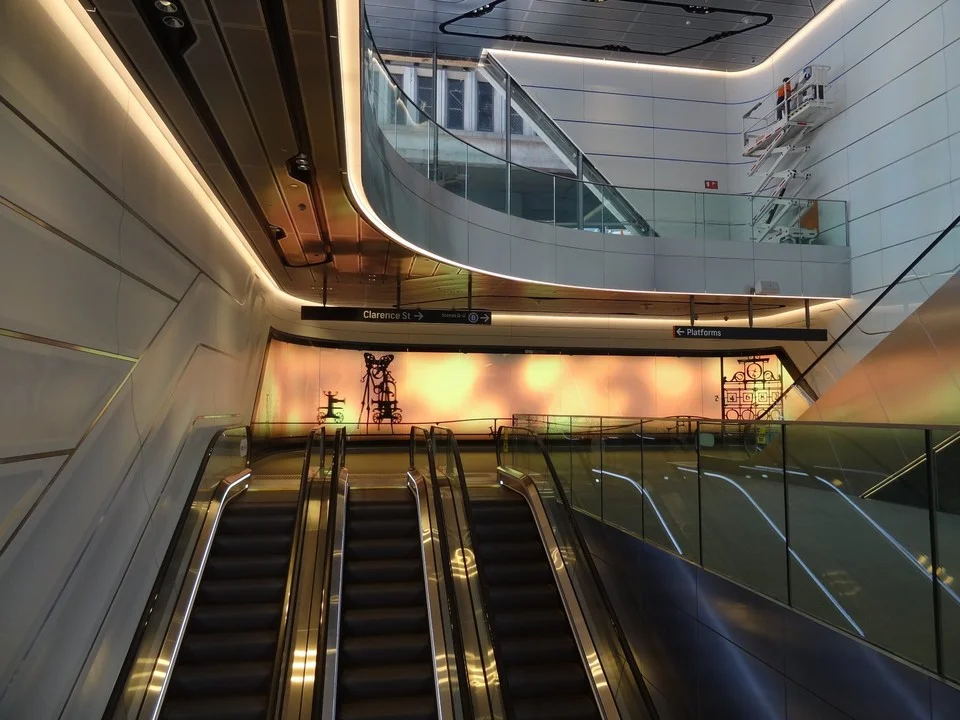Sometimes Australia seems like one big railway infrastructure project. With a forecast 8 million people moving to our major capital cities in the next 20 years, it’s not surprising. Infrastructure Australia estimates that demand for public transport in Sydney will grow 48% by 2031 and almost double in Melbourne and Perth.
Markthal
In December I wrote a piece about Adelaide’s long established Central Market, set to celebrate its 150th anniversary next year. Now I’ve come to see Rotterdam’s Markthal (Market Hall), just three and a half years old. Notwithstanding the age difference, the similarities between the two are remarkable; walking into Markthal, the layout, scale and produce on offer gave me the momentary feeling that I might have been walking back into Adelaide.
A lesson central to our work
I’m reminded that sometimes life dishes up just the lesson we need – right when we need it – as an unplanned trip finds me in Adelaide Central Market on a hot early-summer afternoon.
From where I’m standing in this thriving retail ecosystem, without turning my head or making an effort, I can see stalls of Asian gourmet take away, organic fruit and veg, a chocolatier, specialist cheese, fish and seafood, and The Corner Deli with a sign that reads:
The Corner Deli: Hamcoffeebaconolivesdipssmokedsalmonvinegarscoffeehamcheesebreadoilseggs
Urban Australia; generating cultural capital or breeding cultural impoverishment?
We tend to think of rapid urbanisation as something that happens somewhere else, like China. But it’s happening here too, right in front of our eyes.
In a speech to the Committee for Economic Development of Australia in February, former Treasury secretary Ken Henry estimated that Australia will need a brand new city for two million people every five years.
See you at Wynscreen
What happens when a major developer of transport infrastructure makes a commitment to integrating contemporary art into their projects?
We’ll find out when around 30,000 commuters per day get to experience Wynscreen, Sydney’s newest site for art in public space, dedicated to high quality, curated moving image artworks.
The Argument for Better Development Process
The most recognizable characteristic of Australian urban development is the adversarial nature of its process.
Every day brings highly publicized media stories of infrastructure projects and developments mired in conflict; bogged down in disputes between competing interest groups.
In Sydney alone examples best known for the controversies that surround them include; Wesconnex, the Lightrail Program, Crown Barangaroo, the Balmain Tigers site, the Waterloo Eveleigh project and residential developments across the city. For media consumers these controversies make interesting stories but for the people involved they’re disastrous.
A cultural high for NYC
At New York’s High Line a handful of vendors operate from trailers clustered between its southern entrance and the new Whitney Museum of Art next-door. I strike up a conversation with Dana, originally from Albania and now a New Yorker selling photographic prints of street art from all over the city. The prints capture moments in time; the street art which provides the source material often doesn’t last for long, supplanted by the perpetual redevelopment of this city. Dana tells me that her husband takes the pictures, which I initially believe but later come to question when I see other vendors with the same images.
undesign
Lately I’ve been thinking about Undesign. I know that’s a strange word and perhaps someone has a better one.
One way or another, I’ve spent most of my working life in design. There are a handful of early years that don’t qualify; a couple in the military and a few working as a rural contractor building fences. But mostly it’s been about design. I built a multi-disciplinary design group that reached the top of its game in Australia, took it into Asia and then partnered it with one of the world’s largest experience design companies.
The Authority of the street
The Australia I inhabit has become a place where order and conformity are admired while deviation from the norm is generally unwelcome.
Quite how we became so cautious, particularly given the devil-may-care image we like to both hold of ourselves and promote is beyond the scope of this piece. What is within its domain and what may not be my most popular viewpoint is: “we need some disruptive thinking in our cultural and political mix”. I’m not talking revolution here; I am talking about a loosening of restrictions and constraints that shifts power from authorities to the street.
A beacon for residential development in Sydney
As a pretty regular traveler over Sydney’s Anzac Bridge I’ve watched the Edwin Davey Flour Mill site with interest over many years. Although abandoned since the late 90’s it’s remained an eye-catching building; a handsome Georgian facade with the perfect intervention of a corrugated iron shed penetrating and rising above the brickwork in its top right hand corner. I often wondered what was to become of this piece of Sydney with its century long history of flour milling, particularly given its difficult location between a freeway ramp and the Fish Market. And in recent times, that question has been partially answered as, whizzing by, I’ve seen its conversion into apartments.











